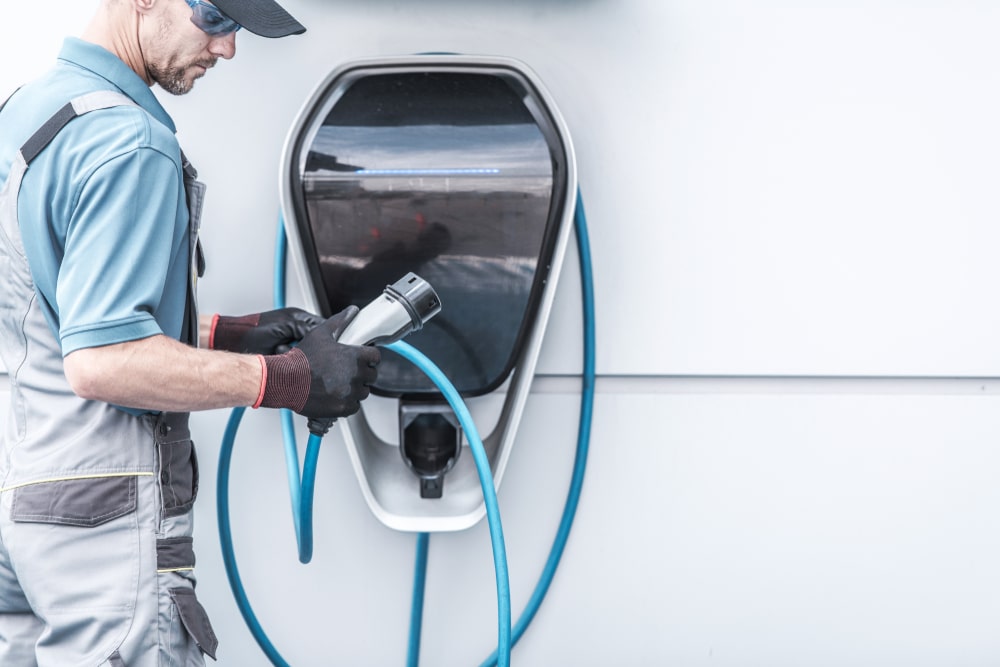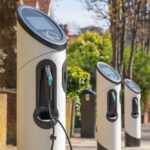Sector - Transport & Infrastructure
Exploring the future of electric vehicles in construction

Amidst the continued rise in popularity of electric vehicles, Ashley Barnett, head of fleet consultancy at Lex Autolease, the UK’s largest fleet leasing provider, explores what the future holds for construction fleets.
The shift to low and zero-emission vehicles is gathering pace. Recent estimates indicate that the market for electric vehicles (EVs) across construction, agriculture and mining could be worth almost £68Bn in less than a decade.
But what does this mean for the construction sector? Should contractors begin the transition to electric vehicles now, or would it make more sense to wait? After all, the most important aspect of effective vehicle specification is ensuring that the right vehicle is chosen, for the right job.
What has spurred the rise of electric vehicles?
The past few years have seen rapid advancements in a number of areas associated with EVs, including improvements to vehicle battery technology, an ever-increasing range of models to choose from and investment in charging infrastructure.
A key factor behind all this is the government’s Road to Zero Strategy – launched in 2018 – which set out a series of ambitious targets and funding packages designed to accelerate EV adoption. The aim? For all new cars and vans to be effectively zero-emission by 2040 – or as soon as 2030, according to more recent recommendations from the Committee for Climate Change.
What benefits do electric vehicles offer?
Firstly, EVs can offer significant whole-life cost savings compared with traditionally-fuelled alternatives. While the upfront cost of an EV may be higher, they can often work out cheaper in the long run – working with an expert leasing provider to complete a whole-life cost analysis is a good place to start.
Fuel is a key area where savings can be made – it can easily account for up to 50% of operational costs in some light commercial vehicle (LCV) fleets. The cost per-mile for a petrol or diesel vehicle is around 14 pence, compared to as little as four to five pence in an EV.
Given that there are fewer moving parts in an electric engine that can become damaged or worn down, further savings can be made in service, maintenance and repair. Cleaner vehicle technologies, such as hybrid or electric vehicles, also don’t require diesel particulate filters or reducing agents such as AdBlue, both of which require maintenance, and which come at a cost.
And EVs are not just cheaper to run; electric motors are quieter than petrol or diesel equivalents, contributing to a reduction in noise pollution for both construction workers and people living near construction sites. Aside from the obvious comfort and wellbeing benefits this brings for on-site teams, a quieter site could be invaluable when it comes to securing planning permission – and minimising complaints from the locals once the build is underway.
Should construction businesses be looking to make the switch now?
Alternatively-fuelled vehicles should benefit construction companies without impacting on their day-to-day operations – which means there are several areas to consider when answering this question.
Firstly, operators need to review their maximum payload requirements. Components in an electric LCV – such as the battery – are heavier than traditional fuel tanks and therefore reduce the vehicle’s payload capacity, meaning that electric vehicles can transport less heavy material per trip than a diesel or petrol equivalent.
That said, the government has taken steps to ensure that switching to electric vans doesn’t mean limited functionality. The maximum electric van weight that drivers with a Category B licence has been increased to 4.25 tonnes, which is 0.75 tonnes heavier than a traditionally-fuelled van. Despite this, drivers wanting to transport more goods in a single trip may still be better-served by the newest, cleanest diesel vehicles for now.
Mileage requirements are another important consideration. Most electric LCVs have a range of roughly 100 miles, which can be reduced if the vehicle is transporting a heavier payload. With this in mind, a new diesel vehicle is still likely to be the most practical option where vehicles are required to cover a higher daily mileage that can’t be covered on a single charge (often the case when motorway driving is involved).
On lower-mileage projects centred in urban areas, EVs are more than able to deliver, as long as they have access to charge points. Most charging should take place at home or at the depot, but on-site charging is also useful and there might be times when drivers need to recharge en route to a job.
EVs operating in towns and cities can also avoid significant access fees where there are emissions restrictions in operation. That said, they won’t be penalised in the short term for using the latest, cleanest traditionally-fuelled vehicles. Euro 4 petrol and Euro 6 diesel vehicles can access London’s Ultra Low Emission Zone (ULEZ) for free, and similar rules are likely to apply in forthcoming Clean Air Zones in other major cities across the country.
Building a more sustainable future
Overall, EVs are only going to become more popular as the market develops. The range of vehicles on offer is expanding, battery technology is improving and access to charge points is becoming more widely available.
In the construction sector, sustainable working practices are growing in importance to consumers and decision-makers alike, and compliance with regulations such as the Considerate Constructors Scheme is increasingly prominent in tender submissions. With this in mind, we’re likely to see cleaner vehicle technology become more of a factor in the sector in the near future, although, for the time being at least, there is no one-size-fits-all approach.
As it stands, most construction fleets will have some LCVs which are ready to be replaced by alternatively-fuelled vehicles; it’s just a case of identifying them. Some job roles can start the transition now, while others will be better-served by the newest, cleanest diesel vehicles while charging infrastructure and battery technology continue to develop and improve.
If you would like to read more articles like this then please click here.
Related Articles
More Transport & Infrastructure Features
- Damning report from PAC on HS2
11 Mar 25
'A case book example of how not to run a major project' is the damning comment from the Public Accounts Committee.
- The renewables revolution in the Scottish Highlands
25 Feb 25
The Highlands are at the heart of a transformative renewables revolution, poised to lead a generational shift in energy production.
- Outlook for the property and construction sector heading into 2025
17 Dec 24
Across the residential, rental and infrastructure sectors, there will be many challenges in 2025, as well as many opportunities.






